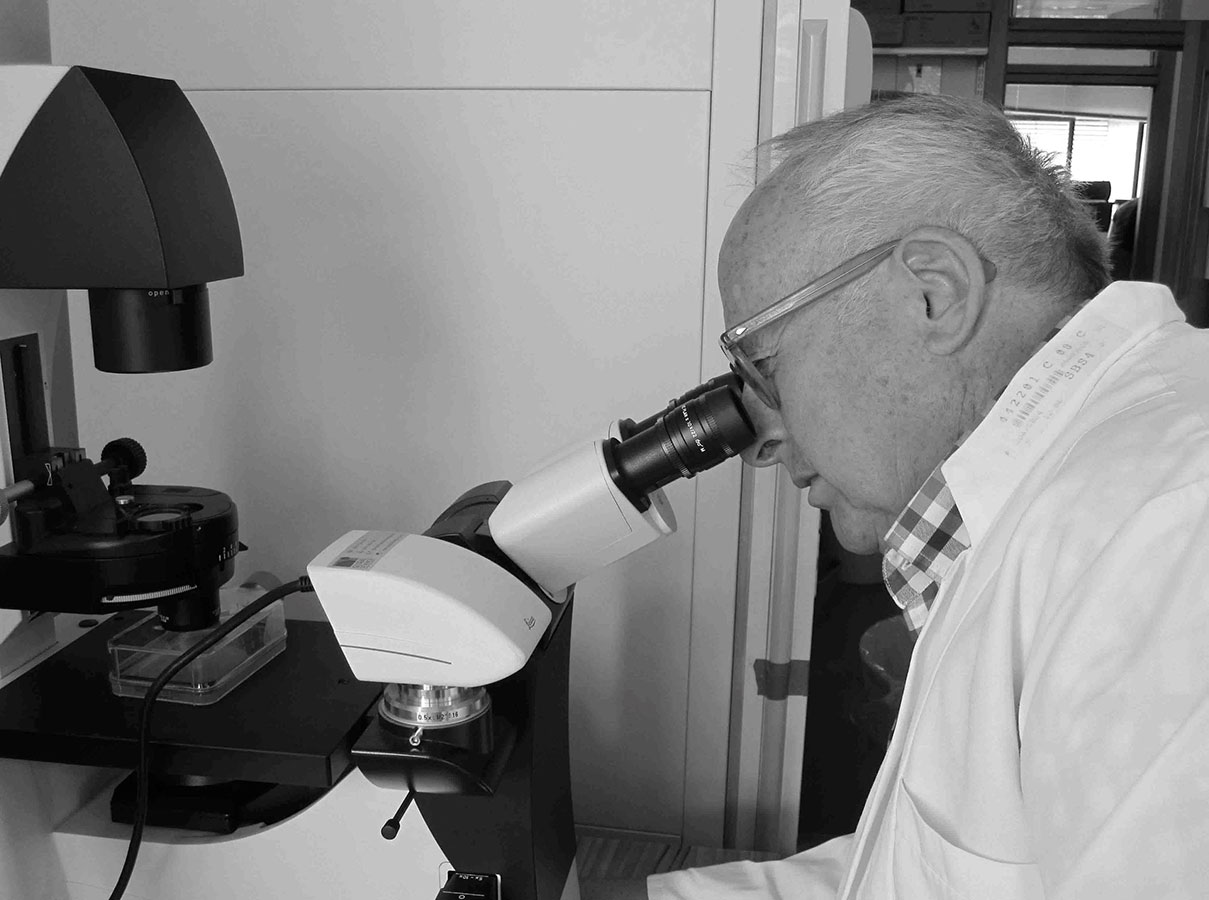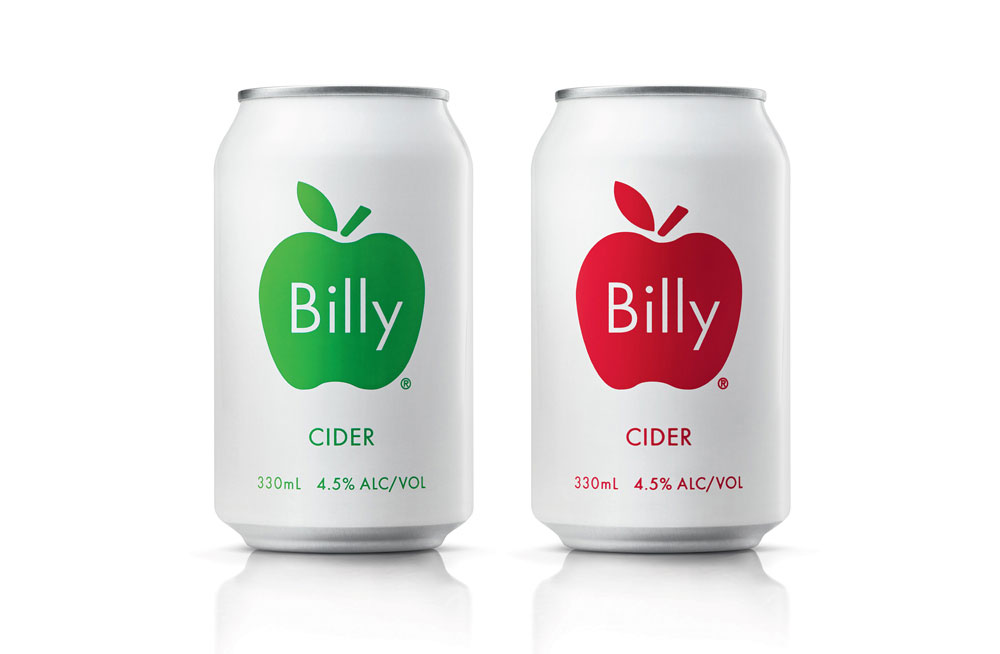Monday 9 March 2015
A major exhibition opening at Auckland Art Gallery Toi o Tāmaki this Saturday 14 March demonstrates the degree to which New Zealand’s foremost conceptual artist, Billy Apple, blurs the boundaries between art and life, commerce and creativity.
Featured in the free retrospective exhibition Billy Apple®: The Artist Has to Live Like Everybody Else – and on sale in the Gallery’s café – will be Billy Apple® Cider, a new product developed in collaboration with Saatchi & Saatchi and Bulmer’s Cider and blended to the golden ratio from four different apples.
The branded ciders, as well as a new Billy Apple® Pacific Coffee blended by coffee roaster, Craig Miller, are examples of Apple’s myriad collaborations and lifelong exploration of art and value.
Both art products will sit alongside over 200 artworks, including paintings, sculptures, photographs, videos and neon light works, as well as human cell cultures and high-performance racing cars. Featuring artworks from all stages of Apple’s career, the retrospective includes distinctive artworks produced in London, New York and New Zealand from 1960 to today. It showcases how Apple’s unique art investigations have crossed over into the realms of design, advertising, collecting, science, mathematics and economics, philanthropy, consumerism and more.
‘The Auckland Art Gallery has been conscious of the need to celebrate Billy Apple’s ground-breaking practice as it has unfolded both overseas and in New Zealand,’ says Auckland Art Gallery Director, Rhana Devenport. ‘The rich oeuvre of Apple working at the cutting edge, whether in the realms of British and New York pop art, intervening in local museum architecture or in re-conceptualising his own role as an artist, and the nature and intersections of art practice with the wider world, is long overdue for a comprehensive review. This exhibition and chronology reflect the Gallery’s intent to support research and thought leadership in our role as the home for art in Auckland. This project is of major importance for the Gallery and New Zealand.’
‘Apple tests the limits between artist and artwork, self and other, subject and object, identity and brand, art and commodity,’ says the exhibition’s guest curator, Christina
Barton. ‘He is an artist of and for our times who insists we reconsider not only what art and the artist can be, but what they can do to experiment with the nature of existence in our contemporary world.’
Billy Apple®: The Artist Has to Live Like Everybody Else is a key feature of the 2015 Auckland Arts Festival programme. The opening day of the retrospective is scheduled to extend into the Festival’s popular White Night. Auckland city’s streets and galleries will come alive with arts festivities and surprise performances as the Gallery joins more than 100 venues Auckland-wide in staying open late into the evening. The Gallery will remain open this Saturday 14 March until 11pm.
The visitor programme accompanying the exhibition includes film screenings, artist and curator talks, group discussions and tours. Talks by esteemed writer Wystan Curnow, guest curator Christina Barton and Dr Craig Hilton are also scheduled.
To coincide with the retrospective, Auckland Art Gallery is publishing Billy Apple® A Life in Parts, an illustrated chronology written by Christina Barton offering an insightful overview of the artist’s career to date.
Billy Apple®: The Artist Has to Live Like Everybody Else will run from 14 March until 21 June 2015. Entry is FREE
Notes to the editor:
Covering fifty-five years of Apple’s prolific career, the extensive retrospective reveals Apple’s decades-long examination of the boundaries between art, life, commerce and science. It explores his on-going contribution to art on the global stage, his past practice and current projects, including:
- Billy Apple’s ‘rebrand’ in 1962, London, when the young New Zealand artist changed his name and bleached his hair, redefining himself as a ‘product’ with his own distinct brand. This was a unique and lasting contribution to the emerging pop art scene where the focus was on the rising world of consumerism;
- Apple’s innate attraction to new technologies, such as his work of the 1960s with neon light;
- His move away from art as object in the early 1970s towards activity-based work, such as cleaning his not-for-profit APPLE Gallery in New York;
- His process-driven works with New York and New Zealand galleries, where he alters a gallery’s fittings, fixtures or structures – and in so doing challenges the operations and relationships of the art world;
- Apple’s investigation of art as value transactions in the 1980s, when his work, including his paintings that resemble IOUs or receipts, was condensed to the basic fact of its material worth;
- Apple’s further consideration of the concept of ‘value’. Through the adoption of the Golden Ratio, an universal formula evident in nature and geometry that he applies to his work;
- Apple® the brand. In 2007, Apple registered his name as a trademark. Current projects explore the legal concept of intellectual property by bringing Apple’s art brand into the market place. Projects include Billy Apple cider, pies and coffee. As he says, ‘In 1964 we took the supermarket into the art gallery, now we’re taking the art gallery into the supermarket.’
- Apple’s collection of race-ready high performance motorcycles and cars that reveal something of artist’s personal passions and their cross over into his art;
- Refrigerated somatic cells from Apple himself, virally transformed to live independently from his body - a collaboration known as the Immortalisation Project with biochemist, Dr Craig Hilton, and;
- Good Works for charity, where Apple’s artworks are transacted to raise funds for a variety of charitable purposes from Women’s Refuge to AIDS to Youthline.
For more information please contact:
Tae Allison, Communications Officer, Auckland Art Gallery Toi o Tāmaki
P +64 9 307 7706
M +64 27 291 9953
E tae.allison@aucklandcouncil.govt.nz


